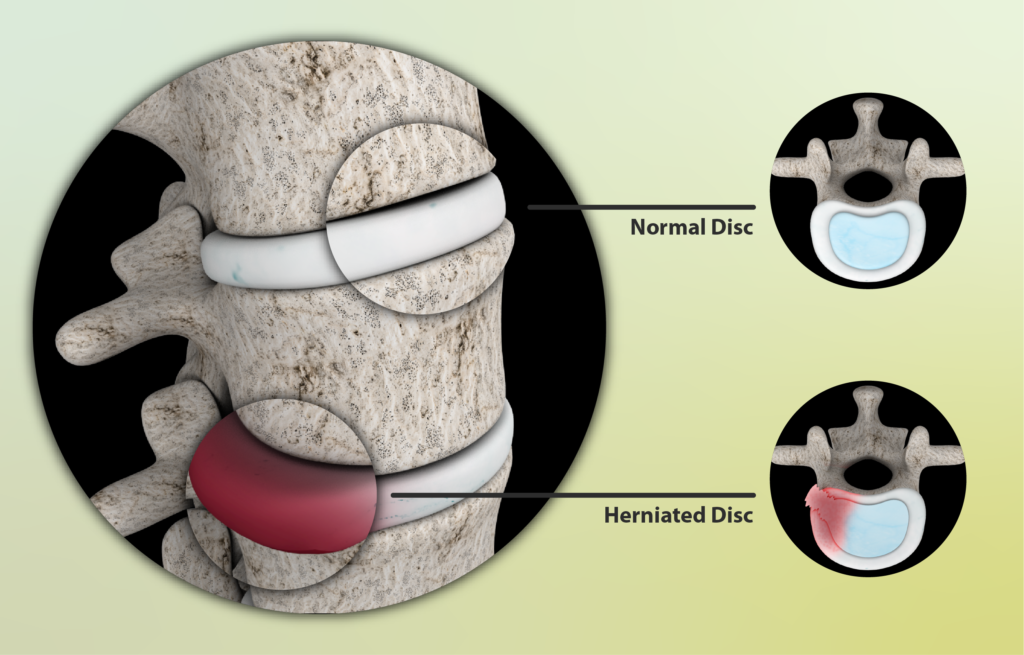Slipped Disc Exercises: A Holistic Approach to Recovery – A slipped disc, also known as a herniated or ruptured disc, can be a painful and debilitating condition affecting the spine. Understanding the significance of exercise in managing this condition is crucial for individuals seeking relief from the associated discomfort. In this article, we will delve into the importance of slipped disc exercises and provide a comprehensive guide to help you navigate your path to recovery.

Importance of Exercise for Slipped Discs
Exercise plays a pivotal role in the management of slipped discs. While bed rest may be necessary during acute phases, incorporating specific exercises into your routine can contribute significantly to long-term relief. The benefits extend beyond physical well-being, encompassing mental and emotional aspects, contributing to an overall improvement in the quality of life for individuals grappling with a slipped disc.
Types of Exercises
- Stretching Exercises Stretching helps alleviate muscle tightness and improves flexibility around the affected area. Gentle stretches like the cat-cow pose and knee-to-chest stretches can be effective.
- Strengthening Exercises Strengthening the core muscles provides support to the spine. Pelvic tilts and leg raises are examples of exercises that target the core, fostering stability.
- Low-Impact Aerobic Exercises Activities like walking, swimming, or stationary cycling promote cardiovascular health without putting excessive strain on the spine.
- Yoga and Pilates for Slipped Disc These disciplines emphasize controlled movements and posture, aiding in both flexibility and strength. Yoga poses like the child’s pose and Pilates exercises contribute to a holistic approach to slipped disc management.
How to Start
Commencing an exercise routine for a slipped disc requires careful consideration and planning.
- Consultation with a Healthcare Professional Seek guidance from a healthcare professional or physiotherapist to ensure your exercise routine aligns with your specific condition.
- Gradual Progression in Intensity Start with low-impact exercises and gradually increase intensity to prevent exacerbation of symptoms.
- Listen to Your Body Pay attention to any discomfort or pain during exercises. Modify or discontinue an exercise if it causes increased pain.
Do’s and Don’ts
- Suitable Exercises Focus on exercises that promote flexibility, strength, and overall well-being. Tai chi and water aerobics can be gentle yet effective.
- Exercises to Avoid High-impact activities such as running or heavy weightlifting should be avoided. Consult your healthcare professional for personalized advice.
- Proper Form and Technique Maintain correct form during exercises to prevent unnecessary strain on the spine. Engage in exercises under the guidance of a qualified instructor when possible.
Sample Exercise Routine
- Morning Stretching Routine Start your day with gentle stretches to loosen up tight muscles and prepare your body for the day ahead.
- Afternoon Strengthening Routine Incorporate core-strengthening exercises to provide stability to the spine and surrounding muscles.
- Evening Low-Impact Aerobic Routine Engage in low-impact activities to promote cardiovascular health without placing excessive stress on the spine.
Overcoming Challenges
- Dealing with Pain During Exercises It’s normal to experience some discomfort, but if pain persists or intensifies, consult your healthcare provider to reassess your exercise plan.
- Adjusting Routines Based on Severity Tailor your exercise routine based on the severity of your slipped disc. Modify exercises as needed to accommodate your current condition.
Real-life Success Stories
Read inspiring testimonials from individuals who have successfully managed slipped discs through dedicated exercise routines. These stories provide valuable insights into the challenges faced and the triumphs achieved through perseverance and commitment to wellness.
Additional Tips for Wellness
- Incorporating a Balanced Diet A nutritious diet contributes to overall health and aids in the recovery process. Include foods rich in vitamins and minerals that support bone and muscle health.
- Importance of Hydration Staying hydrated is essential for maintaining spinal health. Water helps lubricate the joints and cushions the discs, promoting optimal function.
- Maintaining a Healthy Lifestyle Adequate sleep, stress management, and avoiding smoking can positively impact your overall well-being and aid in slipped disc recovery.
The Future of Slipped Disc Management
As research continues, advancements in slipped disc management are expected. Stay informed about potential breakthroughs in treatment options, as a more diverse range of therapies may become available in the future.
Conclusion
In conclusion, incorporating slipped disc exercises into your routine is a holistic approach to managing this condition. By embracing a combination of stretching, strengthening, and low-impact aerobic exercises, individuals can experience relief and improve their overall well-being. Remember to consult with healthcare professionals, listen to your body, and adapt your routines as needed.
Frequently Asked Questions (FAQs)
Q1. Can slipped disc exercises worsen my condition?
A1. While exercises are generally beneficial, it’s crucial to perform them under professional guidance. Incorrect exercises or overexertion can potentially worsen the condition.
Q2. Are there specialized trainers for slipped disc exercises?
A2. Yes, physiotherapists and certified trainers with expertise in spinal conditions can provide personalized guidance and create suitable exercise plans.
Q3. How long does it take to see improvement through exercises?
A3. The timeline varies for each individual. Consistency is key, and improvement may be noticed over weeks to months with dedicated adherence to the exercise routine.
Q4. Can I combine medication with exercise for slipped disc management?
A4. Consult with your healthcare provider to determine the appropriate combination of medication and exercise tailored to your specific needs.
Q5. Are there specific exercises for different types of slipped discs?
A5. Yes, certain exercises may be more suitable for specific types of slipped discs. Consult with a healthcare professional to ensure a personalized exercise plan.




